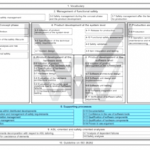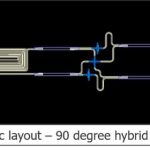Back in the early 1980’s during the nascent years of electronic design automation (EDA), I worked at Texas Instruments supporting what would become their merchant ASIC business. Back then, life was a bit different. The challenge we faced was to make our ASIC library available on as many EDA flows as we could to give as many users as… Read More
Automotive IC Design Requires a Unique EDA Tool Emphasis
Semiwiki readers are no doubt very familiar with the increasing impact of the automotive market on the semiconductor industry. The magnitude and complexity of the electronic systems that will be integrated into upcoming vehicle designs reflects the driver automation, safety, and entertainment features that are in growing… Read More
Whitepaper : The True Costs of Process Node Migration
Mentor, A Siemens Business, just released a new white paper entitled, “The True Costs of Process Node Migration” written by John Ferguson. This is a good quick read that highlights some of the key areas that are often over looked when contemplating a shift of process nodes for your next design.
When considering a shift to a more advanced… Read More
Emulation makes the What to See List
The analysts at Gary Smith EDA produce an annual What To See List for DAC and I quickly noticed that all three major EDA vendors were included on the list for the specific category of emulation. The big problem that emulation addresses is the ability to run in hardware an early version of your SoC so that software developers can get access… Read More
High Density Advanced Packaging Trends
Thursdays at the Design Automation Conference (DAC) are always a good time to catch up on areas of technology which are adjacent to that which you normally work. The exhibit floor is over and you have more time to spend in seminars. At this year’s DAC, I took advantage of a half day seminar put on by Mentor, a Siemens business, … Read More
HLS update from Mentor about Catapult
I recall back in the late 1980’s when logic synthesis tools were first commercialized, at first they could read in a gate-level netlist from one foundry then output an optimized netlist back into the same foundry. Next, they could migrate your gate-level netlist from Vendor A over to Vendor B, giving design companies some… Read More
Rob Bates on Safety and ISO26262
Most of us would agree that safety is important in transportation and most of us know that in automotive electronics this means ISO26262 compliance. But, except for the experts, the details don’t make for an especially gripping read. I thought it would be interesting to get behind the process to better understand the motivation,… Read More
Mentor & Phoenix Software Shed Light on Integrated Photonics Design Rule Checking
Just prior to the opening of the 54[SUP]th[/SUP] Design Automation Conference, Mentor, a Siemens company, and PhoeniX Software issued a press release announcing a new integration between their tools to help designers of photonic ICs (PICs) to close the loop for manufacturing sign-off verification. This is a significant piece… Read More
Overcoming the Challenges of Creating Custom SoCs for IoT
As the Internet of Things (IoT) opportunities continues to expand, companies are working hard to bring System-on-Chip (SoC) solutions to market in the hopes of garnering market share and revenue. However, it’s not as easy as it may first seem. Companies are running into a series of issues that stand between them and capturing the… Read More
The Real Reason Siemens Bought Mentor!
The Siemens purchase of Mentor last year for a premium $4.5B was a bit of a shock to me as I have stated before. I had an inkling a Mentor acquisition was coming but Siemens was not on my list of suitors. The reviews have been mixed and the Siemens commitment to the IC EDA market has been questioned so I spent some time on this at #54DAC.
First… Read More











